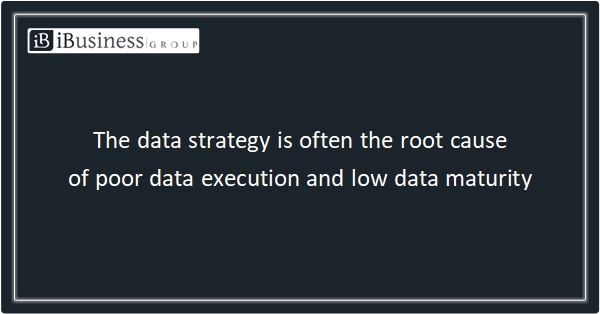In this second article on the paradigm shifts organizations must make in regard to data, we explore the failures of the legacy IT and how adopting a data-centric approach can revolutionize both the Data and IT teams, propelling businesses towards success.

Failed Legacy State #1: “Our systems make it so hard to do business with us.”
Legacy systems often result in cumbersome processes and clunky customer experiences. Outdated technology and data silos create barriers to seamless interactions, causing frustration for both customers and employees.
Data-Centric Approach #1: Seamless, frictionless experiences loved by customers and partners.
A modern data-centric approach prioritizes delivering exceptional customer experiences. By breaking down data silos and ensuring data integration at the source, organizations can provide seamless interactions for customers. This begins with business architecture focusing on creating value in the customer journey and defining what data is needed at various stages of the customer journey to create and measure that value.
Failed Legacy State #2: “Our systems don’t talk to each other so we spend excessive time gathering data in Excel.”
Disconnected systems are a significant challenge for data management. Siloed data prevents organizations from harnessing the full potential of their data assets, creating inefficiencies, hindering collaboration, and leading to redundant efforts and missed opportunities.
Data-Centric Approach #2: Systems integration where data management starts at the source and moves data once.
A data-centric system integration ensures data is collected, processed, and stored efficiently from the outset, beginning at the source system and continuing throughout the data journey. This approach eliminates data silos and fosters a holistic view of the organization's data from a business perspective, not an application-centric perspective. This also avoids the situation where the data team (and potentially many other teams) simply dumps a ton of data in the data lake and hope others use it.
Failed Legacy State #3: “I can't find the data I need to run my business.”
Data and IT teams that dump a ton of data in a data lake through database replication, hoping others come and use it, are doing very little -- I would argue, doing nothing -- to help the business create value for customers. This approach often comes from an Data/IT/Technology-led data initiative where data is viewed merely as an enabler rather than a core strategic asset.
Data-Centric Approach #3: Data is a high-quality, reusable business asset
Data is no longer just a byproduct of IT projects; it becomes a high-quality, reusable business asset. In a data-centric organization, data is a valuable asset that drives innovation and growth. Data-driven insights can revolutionize decision-making and propel businesses ahead of competitors. It is integrated into the core of business processes, enabling data-driven decision-making across the organization. These organizations invest in data governance, data quality, and data stewardship to unlock its true strategic potential. The business now owns the data, is governing the data, and is actively managing the data.
Failed Legacy State #4: “Every IT project runs into data problems and many projects fail.”
Rushing to adopt the latest technologies without a data-centric roadmap and a business value proposition defined often results in project failures. Ignoring data requirements and data quality can undermine even the most promising technology investments.
Data-Centric Approach #4: Execute projects with excellence and enable the business to do more with data.
By adopting a product-centric org/op model, data becomes a central component of every aspect of the business. Data-driven product development and operations enhance agility, speed, and innovation. However, this is a fundamental shift in how virtually every IT department and every IT project functions today.
Failed Legacy State #5: “Everything has to go through the data or IT team and it takes so long to get anything done.”
Treating data initiatives as a sub-component of IT projects results in misalignment with business objectives, a lack of ownership, and the inability to achieve data assets or data maturity from the massive amount of IT spend. A legacy IT team, and even a centralized data team, can become a bottleneck for data requests, causing delays and frustrations across departments. This hampers agility and responsiveness to rapidly changing business needs.
Data-Centric Approach #5: The right people in the right roles doing the right things with data.
A data-centric approach focuses on creating the environment, the team, the processes, and the architectures that ensures data is available in real-time, enabling agile decision-making and rapid responses to market changes. Data becomes a powerful asset that drives the organization's success and those data assets are defined, owned, and managed by the right people within a data governance, activation, and enablement org/op model that encourages and enforces everyone does the right things with data.
Failed Legacy State #6: “We spend a lot of money on data and technology and don't have anything to show for it.”
If the data team is executing within the other legacy IT approaches outlined in this article, the data work that is completed will not be aligned to business needs, causing stakeholders to question why are they asked to spend so much money on data and getting nothing in return.
Data-Centric Approach #6: Project are strategically aligned and deliver what is promised.
A data-centric approach emphasizes aligning data initiatives with overarching business strategies. By understanding business objectives and identifying opportunities for data-driven solutions, organizations can ensure that data and technology investments deliver tangible value and support business growth. Business-driven data applications enable faster and more accurate decision-making, driving tangible business outcomes.
Failed Legacy State #7: “Our data is so locked down no one can get to it.”
Inadequate data access and poor data organization create obstacles for employees seeking valuable insights. This leads to inefficiencies and suboptimal decision-making across the organization. This is typically a result of the information security team in IT and/or the legal department focusing on securing and protecting data rather than focusing on the enablement of that data.
Data-Centric Approach #7: Data privacy and security that serves the business
A data activation and enablement view of data privacy and security emphasizes a balance between data privacy and business needs. With robust data security measures in place, organizations can ensure data protection without compromising operational efficiency.
The failures of the legacy state are clear indicators of the need for a transformative paradigm shift in the approach to data. By embracing a modern approach, organizations can seamlessly integrate data into every aspect of their operations, unlocking its true strategic potential. From providing frictionless customer experiences to empowering data-driven decision-making, the data-centric model for IT enables businesses to thrive in the ever-evolving digital landscape. Embrace the power of data at the heart of your IT organization, and embark on a journey of innovation, growth, and success.
Question: Which legacy IT failure is most critical for you to eliminate today? Leave a comment.





